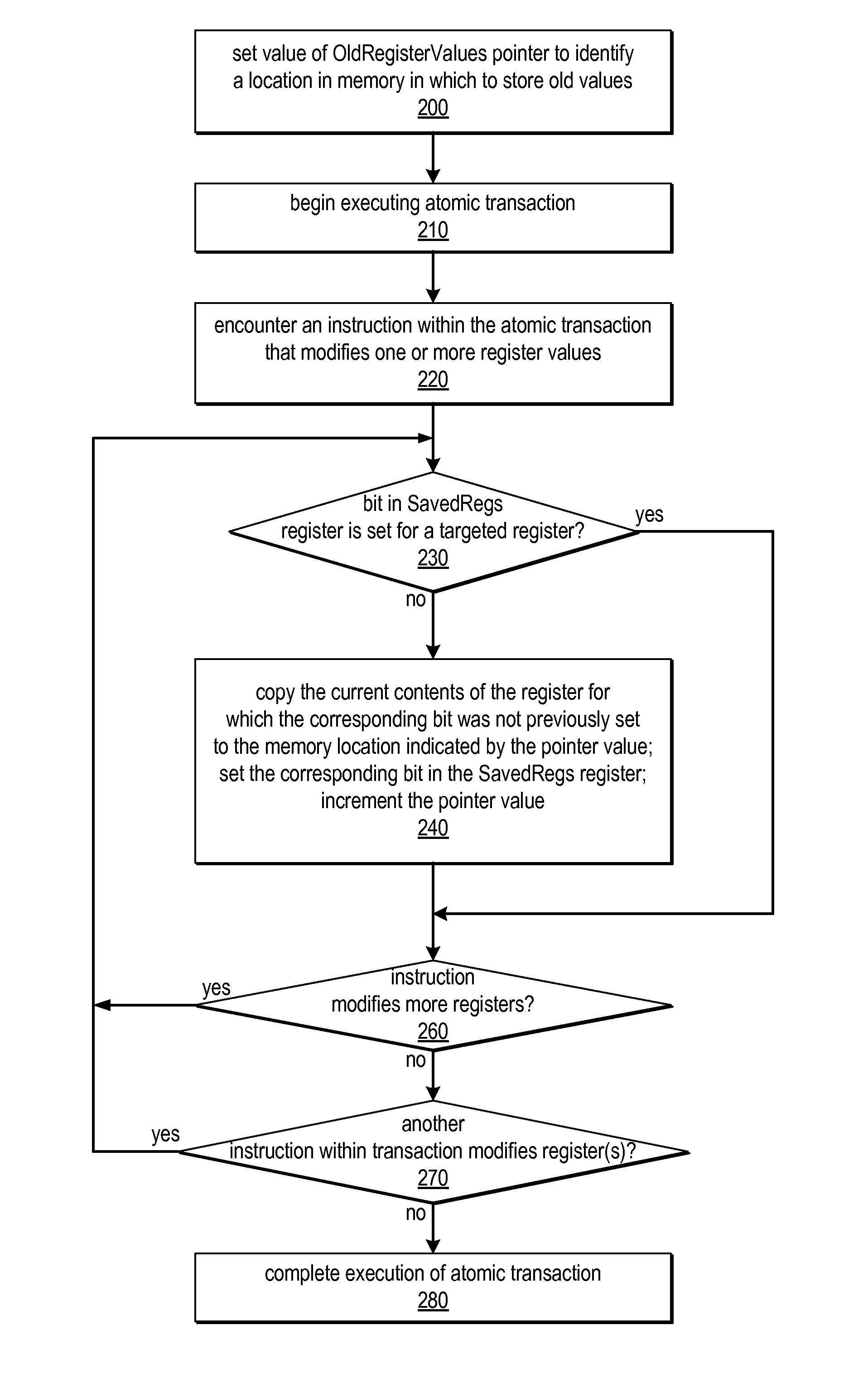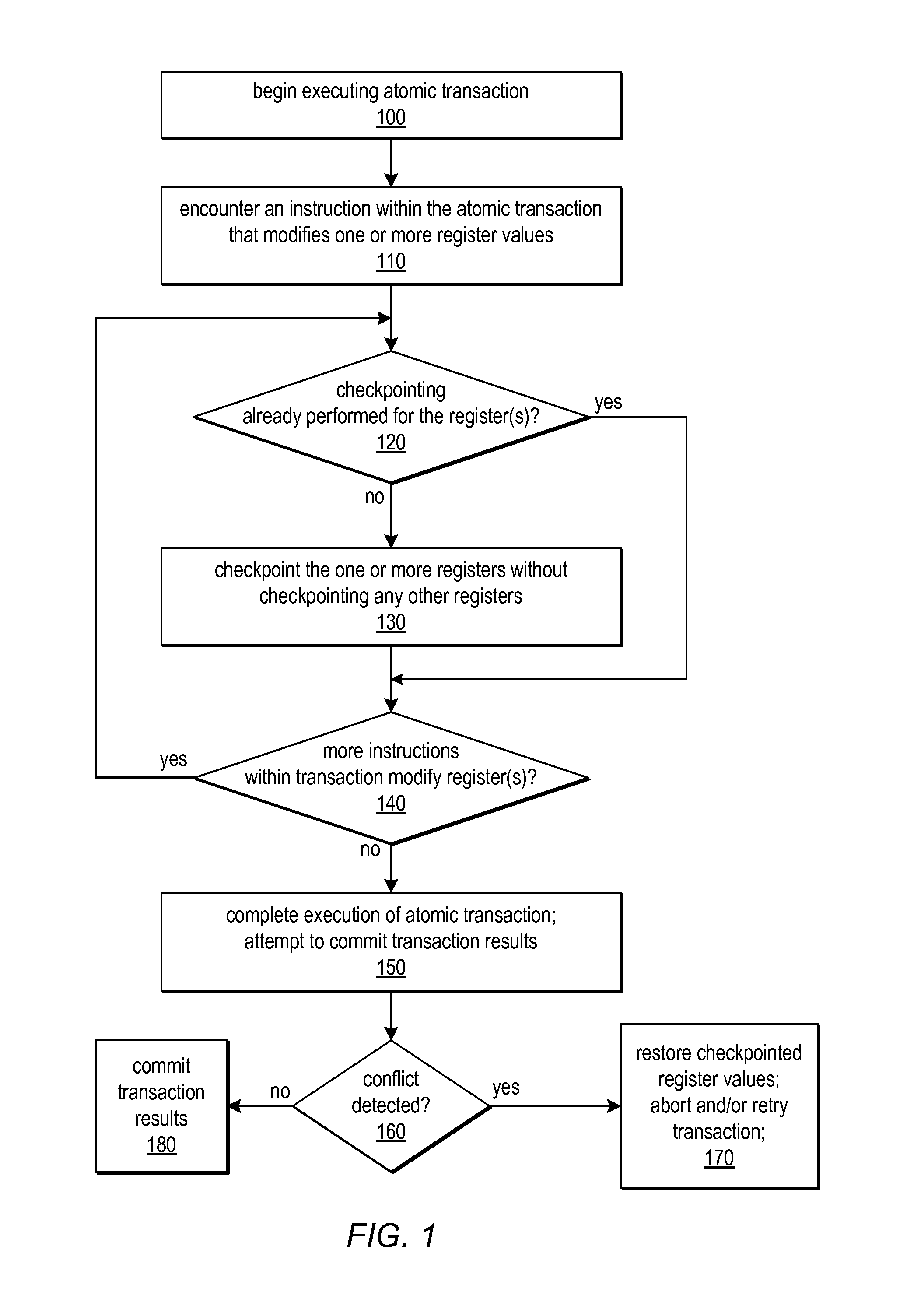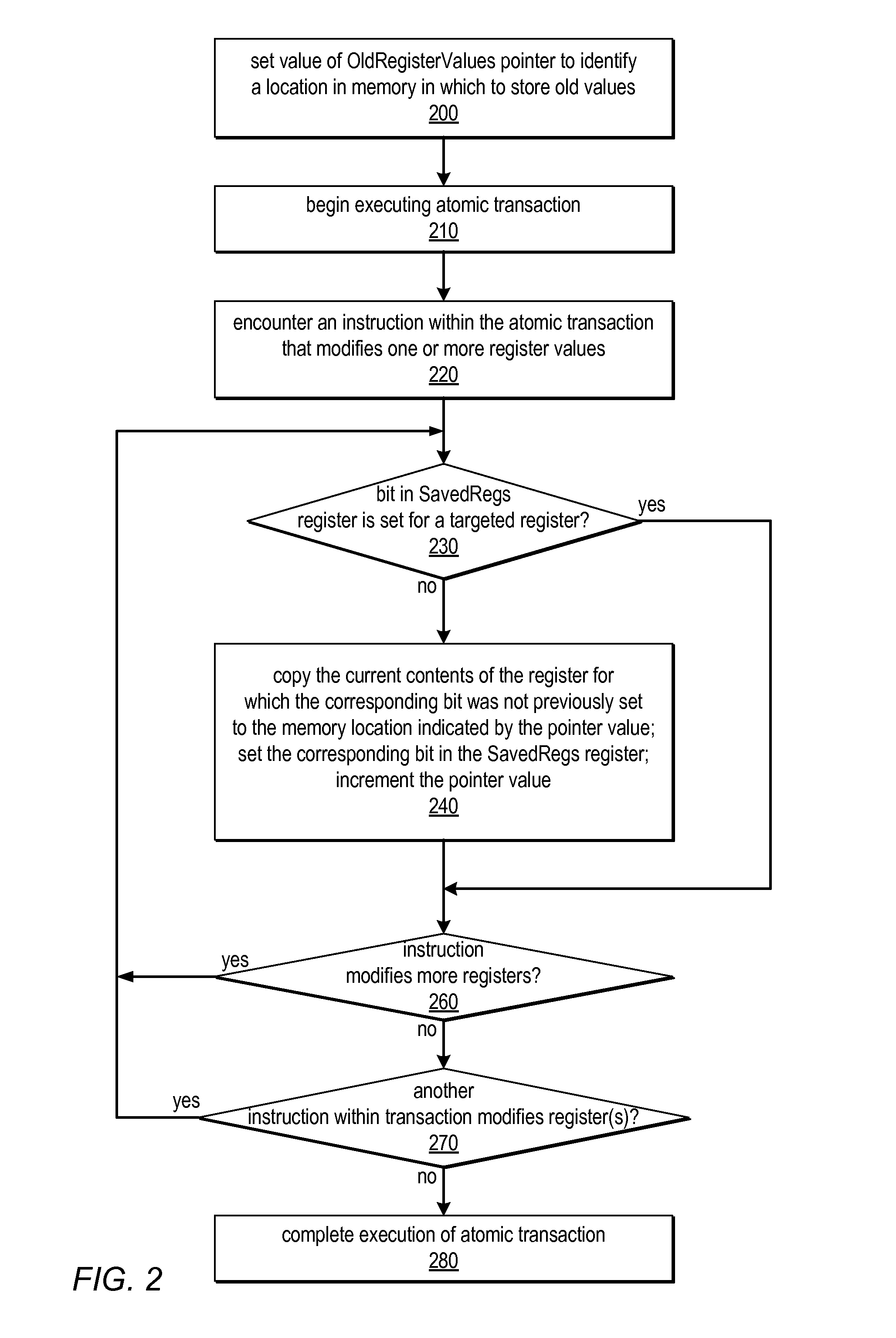System and Method for Performing Incremental Register Checkpointing in Transactional Memory
- Summary
- Abstract
- Description
- Claims
- Application Information
AI Technical Summary
Benefits of technology
Problems solved by technology
Method used
Image
Examples
Embodiment Construction
[0021]Speculative mechanisms often require the values from a set of registers to be saved so that they may subsequently be restored in the case of misspeculation. Examples include transactional memory and thread-level speculation, as well as software-transparent speculative mechanisms. Transactional memory is widely considered to be the most promising avenue for addressing issues encountered in concurrent programming and execution. Using transactional memory, programmers may specify what should be done atomically, rather than how this atomicity should be achieved. The transactional memory implementation may then be responsible for guaranteeing the atomicity, largely relieving programmers of the complexity, tradeoffs, and software engineering problems typically associated with concurrent programming and execution. Transactional memory may be implemented in hardware, in software, or in a combination of the two, in various embodiments.
[0022]Transactional memory (TM) implementations may...
PUM
 Login to View More
Login to View More Abstract
Description
Claims
Application Information
 Login to View More
Login to View More - R&D
- Intellectual Property
- Life Sciences
- Materials
- Tech Scout
- Unparalleled Data Quality
- Higher Quality Content
- 60% Fewer Hallucinations
Browse by: Latest US Patents, China's latest patents, Technical Efficacy Thesaurus, Application Domain, Technology Topic, Popular Technical Reports.
© 2025 PatSnap. All rights reserved.Legal|Privacy policy|Modern Slavery Act Transparency Statement|Sitemap|About US| Contact US: help@patsnap.com



